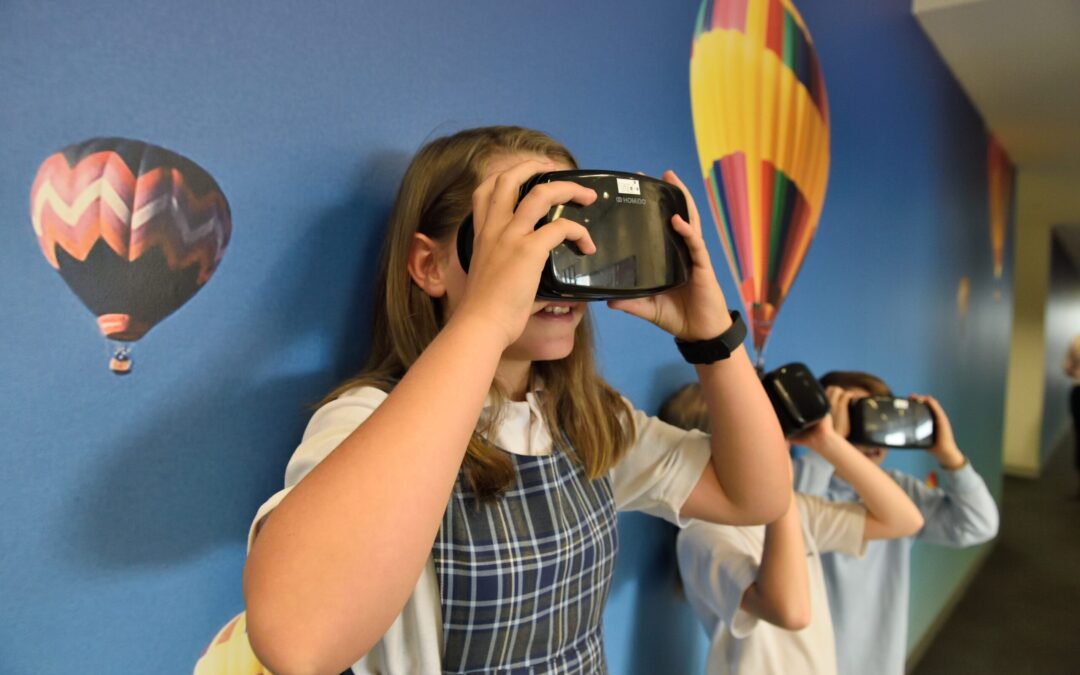These days, students can face VR in the classroom. Teachers use this technology to enhance learning experiences and let students immerse themselves in the subject matter. At home, students can use VR for entertainment purposes. They can find a trusted paper writing service to do my assignment services by domyessay.com and spend hours on end playing exciting VR-powered games. But is it really everything that VR can do for students? Not really!
VR isn’t meant just for fun or study. This technology has the potential to change many different industries, and currently, it’s gaining momentum in the mental health care sector. Read on to learn how virtual reality is changing therapy for college students!
What Is Virtual Reality Therapy?
Virtual reality isn’t an entirely new concept. Being around for quite a while, VR has long deeply integrated into students’ lives.
Virtual reality therapy (VRT) is psychotherapy held in a computer-generated or 3D environment. The first mention of the possible use of VR in therapy appeared back in 1995. However, due to the lack of development in this technology, the actual use of VRT wasn’t accessible until recent years. But now, VR is already here and has started changing the approach to therapy.
Although it’s often compared to teletherapy, VRT isn’t the same. While teletherapy is basically a virtual therapeutic session held over Zoom or similar tools, VRT takes place solely in a virtual world. It strives to expand the therapy’s boundaries and help patients achieve greater results thanks to the combination of real and virtual simulations.
3 Examples of VR in Therapy for College Students
As you already know, virtual reality technology is already here and widely used in different industries, including mental health care. Therapists from all over the world are discovering the potential of VR in therapy, especially for younger patients.
Here are a few examples of how VR assists in therapy and offers better results for student patients:
The Empty Chair Technique
The empty chair technique has long gained popularity in psychotherapy. This technique plays a huge role in handling inner emotions, interpersonal disputes, and other mental health issues. The idea behind this technique is simple — a therapist offers a patient to have a figurative conversation with themselves or other people from their past or today. This tactic can offer a wealth of benefits. However, it requires strong skills of the psychotherapist, as well as a good imagination of the patient. And if the patient’s imagination isn’t rich enough, all treatment can go in vain.
Integrated into this technique, VR can help make up for the lack of imagination in certain patients. It can virtualize people who have a significant connection with the patient and create a realistic environment for effective treatment. This can help patients to express their inner thoughts and emotions to the fullest. And it can be especially handy for students who are too introverted or lack imagination.
Exposure Therapy
The next type of therapy is used to treat psychological anxiety and phobias. The idea is simple — the therapist exposes the patient to the primary source of their anxiety or fear. Through the simulation of different stressful situations, this tactic can help patients face their fears and overcome them or, at least, become more resistant to them.
Although this therapy is very common, leveraging it often drives a number of challenges. On the one hand, facing fears can be done through imagination. And once again, if the patient’s imagination is poor, this can affect the results. On the other hand, therapists can expose patients to their fears in real life. However, in some cases, this could be dangerous. Virtual reality technology can help create effective therapies where students face their anxiety and fear in a safe environment.
Emotional Perception Training
Being loaded with lots of homework assignments and other obligations, modern students experience high levels of stress. Due to this reason, they are very prone to nervous breakdowns and similar mental issues. But the truth is that such a severe response to different emotions is mostly caused by students’ inability to sense their emotions and regulate them accordingly.
According to the psychology expert from the best research paper writing service, emotional perception can be enhanced with the help of relevant training. This training is widely used in therapy to help younger patients (such as students) learn how to notice, understand, and manage their emotions. And VR can help improve this training. With this technology, therapists can create realistic simulations that stimulate different emotions in their patients. For example, if a student suffers from exam anxiety, VR can simulate a real exam environment. In such a virtual environment, patients can observe their emotional reactions and learn to manage them effectively.
The Bottom Line
As you can see, VR has already found applications in therapy for college students. It helps therapists overcome a variety of challenges that hold patients back from attaining the desired results. And this technology keeps advancing. Thus, we believe that it really has the potential to change therapy for college students forever!

